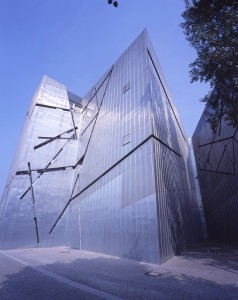 New director Peter Schäfer on challenges and his plans
New director Peter Schäfer on challenges and his plans
In the summer of 2013, after 15 happy years at Princeton University, I decided to retire from my chair in Jewish Studies. My wife Barbara and I relocated to Berlin where we had lived for many years before moving to Princeton, even though I was not looking forward in particular to the European notion of “retirement.” Among the many important things I learned in the US is the fact that there is no such thing as “retirement”: as long as life goes on, one continues to learn and to practice what one has learned.
But still, to become the Director of the Jewish Museum Berlin is an enormous challenge. To begin with, to accept the offer to succeed Michael Blumenthal felt more than bold. I cannot say that I did this lightheartedly – but finally I took comfort in the fact that, as nobody is fit to fill his shoes, I might as well give it a try. Under Michael Blumenthal’s exceptional leadership, the Jewish Museum Berlin is today one of Europe’s largest and most popular Jewish museums and a beacon of the rich museum scene in Germany. German Jewish history and culture, a history of almost 2000 years, has once again arrived at the very heart of the capital of the new German republic.
It won’t be easy to cultivate and develop this heritage, and I am grateful that Michael Blumenthal has agreed to assist me for the next two years with his incredible experience. Two major tasks await the new director. The first is the design and implementation of a new permanent exhibition. After 15 years the present exhibition has matured, and the time has come to renew it.
Two major tasks ahead
The second major task is to build the recently established Academy of the Jewish Museum Berlin as a forum of public debate about present-day issues. In addition to the current program on migration and diversity, I envision the Academy as a place of vibrant debate about the history of the three monotheistic religions and how this particular history, with all its political and social implications, shapes our life today.
Over the last few weeks I have frequently been asked: You have never worked for a museum before – how come that you accepted the position of the director of the Jewish Museum Berlin? Quite correct, I answered, but as a university professor I have long ago learned that research and teaching belong together. Teaching means to communicate what one has learned and hopes to know into the public domain, that is, to make it relevant for and accessible to a wider public. It is also to listen carefully to feedback from the public, and adapt our teaching accordingly.
This is in essence what a university professor does, and I think is at the heart of the job description of the director of Jewish museum.
Expertise and a dedicated team
The other question I have been asked is more delicate: You are not Jewish, don’t you think the director of a Jewish museum should be Jewish? This question has accompanied me all my life as a professor of Jewish Studies. My predecessor at the chair of Jewish Studies at the Freie Universität Berlin, Jacob Taubes, had a very succinct response: A mathematician doesn’t need to be a triangle. I am indeed of the opinion that neither a professor of Jewish Studies nor the director of a Jewish museum need to be Jewish. What counts is their professional expertise, and it is this expertise that I hope to utilize for the benefit of the Jewish Museum Berlin. But, of course, I am aware of the significance of entrusting this vitally important museum to a non-Jewish German, and I accept that challenge with some trepidation and much energy for what lies ahead. And I know that I have a splendid, knowledgeable, and dedicated team to support me with this task.
